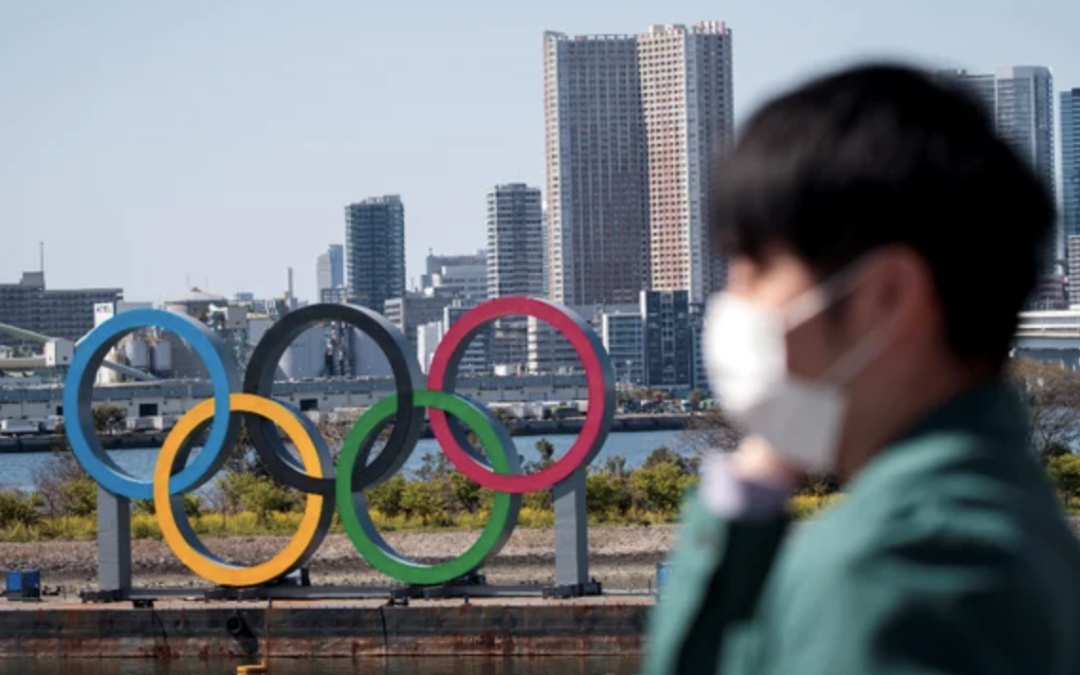Getty Images
Article initially published in The Hill on June 16, 2021 and written by Lisa Brosseau and Annie Sparrow.
Amid the ongoing COVID-19 pandemic, there is good reason to be extremely concerned that the International Olympics Committee (IOC) and the Japanese government are not suitably prepared to conduct the 2020 Olympics safely. The final version of the IOC’s Playbook for Athletes and Officials was just released. Like previous versions of the playbook, it does not recognize aerosol inhalation that is now understood to be an important — if not the most important — mode of transmission for SARS-CoV-2.
In a recent New England Journal of Medicine Perspective, we recommended that the IOC take a more thoughtful and nuanced approach to risk, with a focus on interventions that prevent aerosol inhalation, tailored for different activities and venues.
The playbooks focus on droplet and contact transmission, which in the early months of the pandemic were believed to be the major vehicles for transmission. Aerosol inhalation requires a different set of controls. Inhalation exposure can occur throughout an enclosed space, both near and far from a source. Plexiglas barriers will not prevent movement of small particles throughout a space. Limiting the number of people (potential sources of transmission) in an enclosed space lowers aerosol concentration, but physical distancing will have limited efficacy as infectious particles are distributed throughout. A single infectious person can generate high particle concentrations that linger long after the person leaves.
Ventilation
The IOC playbook recommends opening a window every 30 minutes to ensuring good ventilation — this is an inadequate approach. Control of aerosol inhalation requires addressing both the quantity of air moving through a space as well as the air patterns that travel from infected to non-infected individuals. With time, a poorly ventilated space with dead or recirculation zones can put everyone in that space at risk. We strongly recommend that the IOC assess airflow patterns in all Olympic venues and wherever else people will be sharing spaces for more than a few minutes. Portable air cleaners equipped with HEPA filters can be highly effective for improving air movement and cleaning in smaller spaces such as bedrooms, dining rooms and buses. The IOC should engage with ventilation experts to ensure adequate air quality in larger and more complex venues.
Masks
Face coverings limit the emission of droplets and may lower the chance of inhaling large droplets, but they have limited efficacy with respect to the high concentrations of small particles generated during breathing and talking. The longer that even a masked person spends in a space, the greater the chance of inhaling an infectious dose. Anyone with close contact with many people — for example transportation, restaurant or similar workers — should be wearing a high-quality, individually fit respirator, such as an N95 filtering facepiece respirator.
Vaccination
Even though a special effort is being made to vaccinate athletes, the IOC estimates that 15 percent of athletes will not be vaccinated, with the rate varying by country. It is not clear how the IOC determined this rate, which ignores that, for some countries, most of their athletes will be unvaccinated. Protecting unvaccinated athletes will be difficult in shared apartments and indoor venues.
Less than 10 percent of people in Japan are vaccinated, thus, large numbers of staff and volunteers may not be vaccinated. Some argue that vaccination should be mandatory, but this ignores those who cannot be vaccinated and those concerned — understandably — about the effect of vaccination on athletic performance. As discussed here and in our perspective article, there are other ways to make the Olympics safe.
COVID-19 variants
Some vaccines may not be as effective against the COVID-19 variants of concern. Variants continue to multiply across the world, but the IOC playbooks do not consider their presence or impacts. It should be assumed that variants with particularly effective mutations for transmission will spread widely.
COVID-19 testing
Daily testing is required for athletes but less frequent testing for other individuals, many of whom have much higher risks due to close contacts with more people. Daily testing, with a sensitive and specific test method, should be required for everyone involved in the Olympics. This will ensure fast identification and removal of infected individuals, lowering the risk of transmission for everyone.
Many other issues have received inadequate attention and detail in the IOC playbooks. These include the field of play, in particular high-risk sports such as wrestling. Another is athlete education about COVID-19 risks. The playbooks do not assign responsibility for this important task nor explain how it will be meaningfully delivered and reinforced before and during the Olympics games. A phone-based app that screens only for symptoms will not identify pre- and asymptomatic-infections and places sole responsibility for managing transmission on individual athletes and participants.
International travel
In the best case, only a few events are cancelled, and the IOC achieves a successful Olympics. That narrow perspective ignores the potential global impact, however. Athletes returning home are likely to bring one or more variants to their countries, many of which have low rates of vaccination. Often after many people travel for holidays or events, surges occur a few weeks later, as observed following Thanksgiving in the U.S. and the global spike 14 days after Christmas. Therefore, surges are likely in Japan and across the world two to four weeks after the Olympics, just as the Paralympics are starting. Many Paralympians may be more vulnerable.
In the worst case, variants known, and unknown will be shared and mixed in Tokyo and then introduced around the world to people who are unvaccinated, unprotected, and unable to obtain treatment. The Olympics — the only mega-sporting event in which every country participates — have the potential to become a mega-spreading event of global proportions.
We strongly recommend that the WHO immediately convene its Emergency Committee to address the interventions needed for preventing aerosol transmission. We do not understand why the Committee has not been convened now less than two months away from the games — when they were convened to address Zika virus well before the 2016 Brazil Olympics. We plead with the IOC to seek more and better input from a larger set of stakeholders, athlete representatives and scientists before naively assuring the world that everything will be safe.
Read the full article thehill.com


Recent Comments